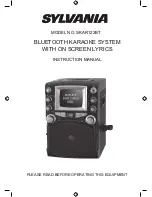
8
8
8
8
PIR Motion Sensor
The
P
assive
I
nfra
R
ed (PIR) Motion Sensor will, under
typical conditions, detect a human being moving around
within approximately thirty feet (about 10m) from the
sensor. This is an average value, as the actual detection
range is between 16ft/5m and 50ft/15m.
As the performance of the sensor is determined
primarily by environmental conditions, no guarantees
can be offered regarding the detection range. However,
the range is typically suffi cient for the majority of
interior spaces (excluding the obviously absurd, such
as basketball courts or aircraft hangars). Some garages
may be large enough that one sensor cannot cover
the whole area – we suggest testing this in the actual
environment if there’s any doubt.
The sensor has a 110º fi eld of view horizontally, and a slightly narrower view
(approximately 70º) vertically. This means that most of what you could see if you
closed one eye and put your head where you’d mount the sensor is pretty close to
the area the sensor will cover. The main blind spots, of course, are above, below
or behind the sensor itself.
Typically, the ideal placement in an environment is in the upper corner of a room,
facing slightly towards the ground (perhaps 20-25º, depending on the height of
the sensor). Try to cover typical paths through the room, focussing particularly on
likely entry and exit points. If the room has several entry points, try to cover as
many of these as practicable.
A visible PIR motion sensor can be a great deterrent to intruders – but on the other
hand, skilled intruders can avoid obviously visible sensors. Try to mix it up a bit.
How it works:
The PIR motion sensor is a
passive
infrared motion sensor, meaning it detects
infrared radiation rather than projecting it (unlike a security camera with infrared
night vision, which is
active
infrared). All objects emit this “black-body radiation”
(we commonly call it “heat”) and the infrared sensor looks for any of this radiation
which moves.
The PIR motion sensor is not infallible – in particular, it cannot detect objects/people
which are the same temperature as their background. So a human being moving
about on an extremely hot day might go unnoticed. Also, a security camera with
active infrared night vision in the same vicinity as the infrared sensor may give false
alarms (particularly if it is a moving PTZ system).
The PIR motion sensor
13
13
Pairing Sensors
Each sensor in your system needs to be paired with a mode and zone on the
Keypad Alarm Control Unit. You can have multiple sensors in a single zone and/or
zones with no sensors attached. If you choose, you can have all your sensors in the
Home or Out modes, or a combination of both. We recommend a combination of
both, as this adds functionality and value to your alarm system.
Press the ZONE SET button and hold for approximately 6 seconds, until the
•
Keypad Alarm Control Unit beeps twice.
Press HOME if you’d like to assign a sensor to the Home Zone, or OUT if you
•
want to assign the sensor be active to Out Mode.
Press number on the keypad for the zone that you would like to assign the
•
sensor to.
Trigger the sensor you wish to assign to that zone.
•
To confi rm your selection, press the Zone Set button. The Keypad Alarm
•
Control Unit will beep twice. Otherwise, the system will ‘time out’ after 40
seconds and discard your changes.
Repeat this procedure until all your sensors have been assigned to their
•
respective zones.
How many sensors can I assign to a single zone?
The short answer is: as many as you want.
The longer answer is: the Wireless Alarm System can support dozens wireless
sensors at a time. The only limitation is due to the available bandwidth (number
of radio frequencies) that the Wireless Alarm System can individually identify. As
the Wireless Alarm System comes with only four sensors (two PIR motion sensors
and two Window/Door Sensors) the bandwidth limitation won’t present an issue
unless you dramatically increase the scope of your alarm system.
Any number of sensors can be paired to a single zone, up to the maximum number
supported by the system. However, we recommend spreading them out over all
eight zones, as this will allow you to more easily determine at a glance what
sensors have been tripped and which have not.
Swann
offers no guarantee that any third party sensors will be compatible
with the Wireless Alarm System.
In fact, we suggest that they probably will not
be. There are many protocols and formats for alarm signals,
most of which will
not work with this system
.
Содержание RL-0507A
Страница 1: ...User s Manual For RL 0507A ...






























